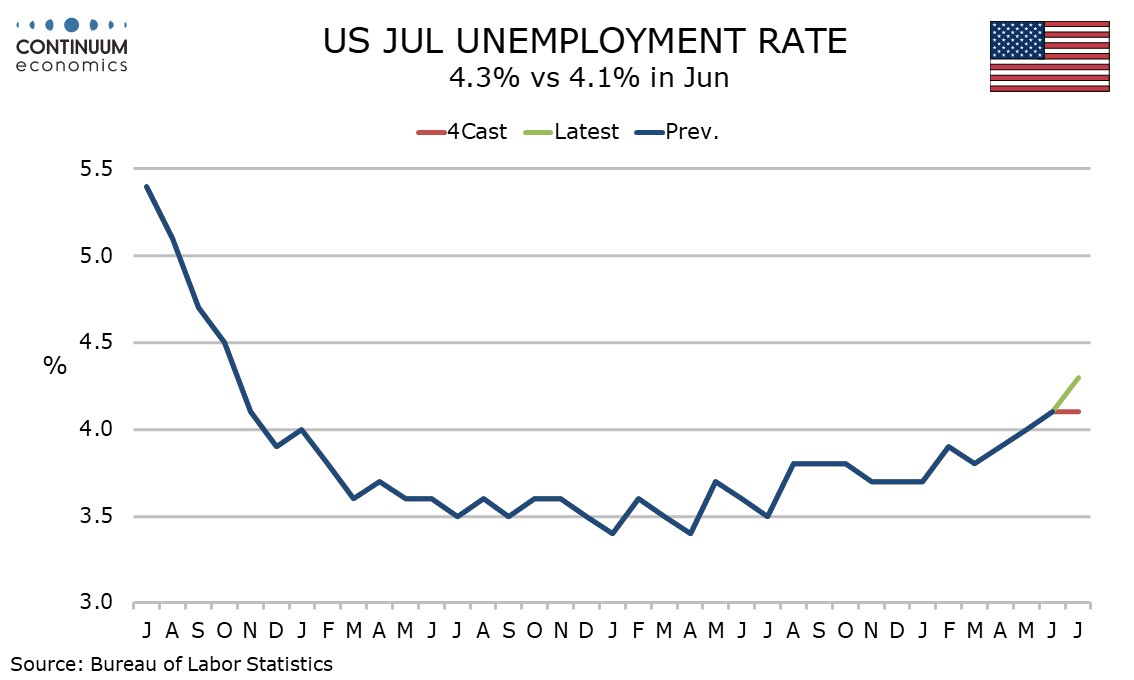U.S. Election Update: Heading for the Least Risky Outcome?
Since President Joe Biden dropped out of the race, his Vice President Kamala Harris has moved into a marginal lead in the polls against former president Donald Trump and must now be seen, albeit marginally, as the more likely winner. Democrats are looking increasingly likely to gain control of the House but Republicans remain likely to gain control of the Senate, reversing the current situation. Such a result may be the least risky possible one for the markets, but uncertainty remains high, and may do so even after what may be a hotly disputed election.
A combination of a Democratic President and House with a Republican Senate would probably be the least risky for the markets. It would suggest continuity in policy. There is uncertainty over how far to the left Harris would like to govern, but should Republicans gain control of the Senate she would have little room to move policy significantly to the left. The debt ceiling will need to be raised in early 2025 and a tense standoff is likely, but a Republican Senate would be much less likely to risk a default on the debt than would a Republican House. Markets would have confidence that the standoff would ultimately be resolved and fiscal stress would likely only be temporary.
While Harris is now the favorite in the betting odds, it should be remembered that Trump upset the betting odds in 2016 and Biden’s win in 2020 was narrower than the polls had suggested. It remains a very close race, with much that could happen to change the race. Harris remains in a honeymoon with enthusiastic support from both the Democratic left (who welcomed the choice of Minnesota Governor Tim Walz as her running mate) and the center (who found Walz acceptable), but there are several issues, most of all the confect in Gaza, where it will be difficult for Harris to keep her coalition united. While we do not believe the economy is heading into recession, further rises in the unemployment rate in the three employment reports due before the election could cause problems for Harris. However, now that Biden is out of the race, Trump’s unpopularity with swing voters is clearly an asset to Harris.
 The election for president will come down to a small number of swing states, three in the Rustbelt (Pennsylvania, Michigan and Wisconsin) and three in the Sunbelt (Georgia, Arizona and Nevada) with the first three seen as slightly more favorable to the Democrats, and together would be enough (barring a significant upset elsewhere) to give Harris a marginal 270-268 electoral college win. However it is very close, and should Trump win Pennsylvania’s 19 electoral college votes Harris would then have to win Georgia’s 16, as well as at least one of Arizona and Nevada. Should a Harris win be dependent on a close race in a single state Trump would almost certainly do all he could to overturn the result, possibly with the support of sympathetic local officials, and it could end up in the Supreme Court. Political uncertainty between November’s election and the inauguration due in January may be high.
The election for president will come down to a small number of swing states, three in the Rustbelt (Pennsylvania, Michigan and Wisconsin) and three in the Sunbelt (Georgia, Arizona and Nevada) with the first three seen as slightly more favorable to the Democrats, and together would be enough (barring a significant upset elsewhere) to give Harris a marginal 270-268 electoral college win. However it is very close, and should Trump win Pennsylvania’s 19 electoral college votes Harris would then have to win Georgia’s 16, as well as at least one of Arizona and Nevada. Should a Harris win be dependent on a close race in a single state Trump would almost certainly do all he could to overturn the result, possibly with the support of sympathetic local officials, and it could end up in the Supreme Court. Political uncertainty between November’s election and the inauguration due in January may be high.
Odds of Democrats regaining control of the House have now moved above 60%, from only marginally above 50% before Biden dropped out, while odds of Republicans regaining control of the Senate remain above 60%, if slightly down from earlier levels. The races are far from certain, with Trump having overcome tougher odds in 2016, but a Democratic House and a Republican Senate is clearly the central expectation. Barring a major upset elsewhere, The Senate race may come down to Ohio and Montana, states which Trump is likely to win but where incumbent Democratic senators are more popular than the Democratic Party. Even if Harris wins the election, giving the Democrats the tie-breaking vote in the Senate, the Democrats will need to win in both Ohio, where the race is very close, and Montana, which looks tougher for the Democrats, but not impossible. If come November, a Harris win is widely expected, swing state Senate voters may be wary of allowing Democrats to win it all.